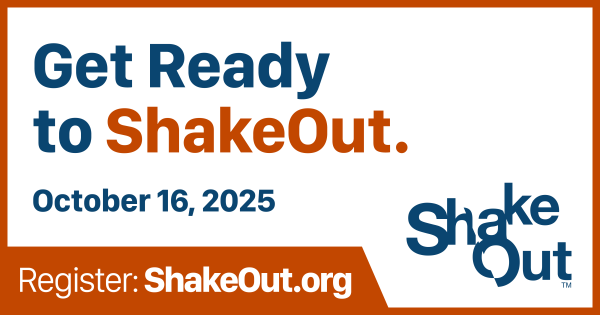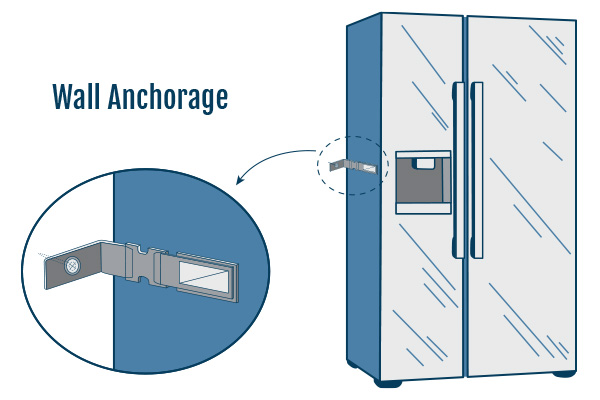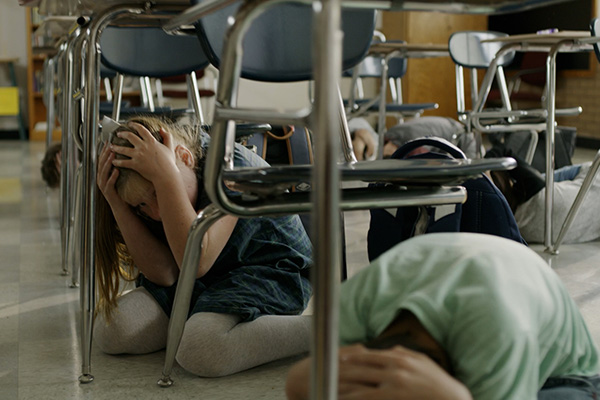Understanding California Earthquakes
California is known for its picturesque landscapes and vibrant cities. But it’s also one of the most seismically active regions in the United States. The state's unique geographical features also makes it vulnerable to earthquakes.
The infamous San Andreas Fault runs about 800 miles through California and is a major source of seismic activity. This famous fault is just one of many that crisscross the state. These earthquake faults can cause significant damage to homes, schools and hospitals if they produce a large earthquake.
History has shown the consequences of major California earthquakes. The 1994 Northridge earthquake and the 1989 Loma Prieta earthquake are notable examples. Both caused significant destruction and highlighted the importance of earthquake preparedness.
California's unique seismic environment demands constant vigilance. Awareness, education, and preparedness can mitigate risks.
To better understand earthquake risks, it's essential to recognize common earthquake terms:
- Magnitude: The measure of energy released during an earthquake.
- Epicenter: The point on the Earth's surface directly above the earthquake origin.
- Aftershock: Tremors after the main earthquake event in the days, or sometimes weeks, to follow.
- Seismic waves: Energy waves that cause the ground to shake.
Having this basic knowledge can be valuable in understanding local earthquake risk. Knowing the risks from earthquakes helps you get prepared and plan ahead.
Education plays a significant role in reducing earthquake risks. Residents benefit from ongoing education about preparedness. This includes learning safe practices and implementing safety measures at home.
Knowing important earthquake response activities practiced during the Great California ShakeOut allows residents to know how to react appropriately when an earthquake occurs.
The efforts of knowing about earthquake risk and knowing how to respond safely, together form the foundation of a resilient community, ready to face future earthquake events.
What is the Great California ShakeOut?
The Great California ShakeOut is one of the world’s largest disaster preparedness events. Each October, millions of people across California—and worldwide—come together to practice earthquake safety and raise awareness of how to reduce risks. This annual earthquake drill is a powerful reminder that earthquakes can strike without warning, and preparation is the best way to reduce injuries and save lives.
During the ShakeOut drill, participants practice the proven safety action known as Drop, Cover, and Hold On. When you practice this simple technique at home, school, or work, you gain confidence and develop the skills to react fast and well when the ground shakes.
When is the Great ShakeOut?
The Great ShakeOut is the third Thursday of October each year. In 2025, the Great ShakeOut is at 10:16 a.m. on Thursday, October 16.
How to Register for the Great California ShakeOut
Participating is free and easy. Here’s how to sign up:
- Visit the ShakeOut registration page and select your region (for example, California).
- Choose your participation category —such as Individuals/Families, Schools, Businesses, or Community Groups.
- Fill in the registration form, including whether you’ll conduct a Drop, Cover, and Hold On drill at the official time or at a time that works best for you (default is October 16, 2025, at 10:16 am, but you may specify an alternate time).
- Provide your contact information and choose whether you’d like to be listed on ShakeOut's “Who Is Participating?” roster for added visibility and community encouragement.
- Submit your registration. If you experience any issues or need to change your registration later, email help is available at info@ShakeOut.org.
Join the 2025 Great California ShakeOut!
Why Participating in an Earthquake Drill Matters
Living in California means living with earthquake risk. While we cannot predict earthquakes, we can prepare for them. Participating in the Great ShakeOut provides several important benefits:
- Muscle memory saves lives. When an earthquake hits, seconds matter. Practicing Drop, Cover, and Hold On until shaking stops can reduce panic and injuries.
- Identify hazards before disaster strikes. During a drill, you may notice unsecured furniture, heavy appliances, water heaters, or unsecured objects that could fall. This is your chance to take corrective action, making your home or workplace safer.
- Community-wide emergency response. Coordinated participation across neighborhoods, schools, and businesses builds community resilience and ensures everyone knows what to do.
- Preparedness reminder. The ShakeOut is a reminder to review emergency kits, evacuation plans, and communication strategies.
How to Prepare for the Great California ShakeOut
Preparing for the ShakeOut is simple and can be done in a few easy steps. These same actions will also strengthen your ability to prepare for an earthquake in everyday life.
Step 1: Identify Safe Spots
Before the drill, look for safe areas in each room:
- Along an interior wall away from windows.
- Under sturdy tables or desks where you can drop down and cover your head.
- A wall away from windows or glass that could shatter.
Step 2: Practice Drop, Cover, and Hold On
Everyone in your household, school, or office should practice drop, cover, and hold on regularly:
- Drop to your hands and knees to prevent falling or other injury.
- Cover your head and neck, preferably while positioned under sturdy furniture.
- Hold On until the shaking stops.
This simple yet effective method has been proven to prevent injuries caused by falling objects, broken glass, or heavy furniture that falls down.
Step 3: Secure Hazardous Items
Take time to secure your surroundings. Anchor heavy furniture, strap down water heaters, and move breakables away from areas where you sleep or sit. Preventing hazards before an earthquake strikes is one of the most effective preparedness steps you can take. Simple changes now prevent serious damage or injury later.
Step 4: Build or Update Your Emergency Kit
An emergency kit should be able to sustain your household for at least 72 hours. Include:
- Non-perishable food and bottled water.
- A fire extinguisher, flashlight, and extra batteries.
- A first aid kit, medications, and personal hygiene items.
- Copies of important documents and cash in small bills.
Read our blog, How to Prepare an Earthquake Emergency Kit, for a step-by-step guide on what to pack in your earthquake go bag.
Step 5: Coordinate with Emergency Management and Local Resources
Check with your city or county emergency management office for additional ShakeOut information, earthquake safety, evacuation plans, and recovery resources.
Earthquake Safety in Schools and Workplaces
Schools, childcare centers, and workplaces play a vital role in earthquake preparedness. The ShakeOut provides an opportunity for group participation in earthquake drills.
- Schedule the drill. Make sure your school or office participates at the same local time to simulate a real event.
- Train staff and students. Everyone should respond quickly and calmly and know how to Drop, Cover, and Hold On until shaking stops.
- Inspect facilities. Identify falling hazards and risks such as unstable buildings, trees, or heavy furniture that could pose a danger during an earthquake.
- Emergency response planning. The ShakeOut reminds us to check our emergency kits, evacuation plans, and ways to communicate.
By participating in the California ShakeOut, schools and organizations create safer learning and working environments while instilling lifelong safety habits.
The Broader Impact of the California ShakeOut
Launched in 2008, the ShakeOut began in Southern California and has since grown into a global earthquake preparedness movement. Today, millions participate annually—from students and teachers to businesses, government agencies, and healthcare providers.
The ShakeOut strengthens communities by:
- Raising awareness of earthquake hazards
- Promoting safer building standards
- Encouraging families to develop plans and prepare emergency kits
- Supporting faster recovery after disasters
Taking Earthquake Preparedness Beyond the Drill
While the ShakeOut is a valuable annual reminder, earthquake preparedness should be part of everyday life. Here are some ongoing actions you can take:
- Regularly test smoke detectors and keep a fire extinguisher nearby.
- Revisit your emergency kit every six months to update supplies.
- Teach children earthquake safety basics.
- Stay connected with your local emergency management offices for updated resources.
- Consider a seismic retrofit if your home is older and vulnerable to earthquake damage.
Be Ready, Stay Safe
Participating in the Great California ShakeOut is more than a one-day event—it’s a reminder of the importance of earthquake preparedness. By practicing Drop, Cover, and Hold On, securing your home, and learning emergency response steps, you protect yourself, your family, and your community.
Earthquakes are inevitable in California, but serious injuries and damages don’t have to be. With preparation, practice, and awareness, we can all build a safer and more resilient future.






